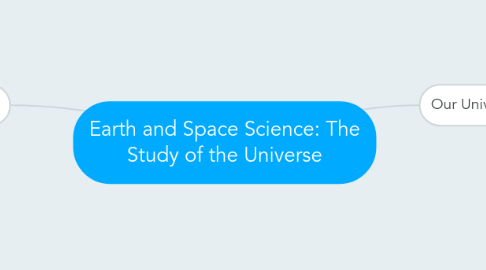
1. Space Exploration
1.1. The Benefits of Space Exploration
1.1.1. Spinoff: Secondary beneficial effect
1.1.1.1. Ionized smoke detector
1.1.1.2. Dehydrated food
1.1.1.3. Antibacterial water filter
1.2. Challenges of space exploration
1.2.1. Microgravity
1.2.1.1. weakens the heart
1.2.1.2. weakens the muscles
1.2.1.3. weakens the bones
1.2.1.4. weakens the immune system
1.2.1.5. To reduce side effects one must exercise daily
1.2.2. Physical Environment
1.2.2.1. vacuum
1.2.2.2. cosmic rays
1.2.2.3. solar radiation
1.2.2.4. extreme hot or cold temperaures
1.2.3. Confined Living
1.2.3.1. Psychological problems could form
1.2.3.2. confinement
1.3. Space Transportation
1.3.1. Rockets
1.3.2. Space shuttles
1.3.3. Space stations
1.3.4. Space Probes
1.4. Satelites
1.4.1. Artificial satellite
1.4.1.1. In orbit around a celestial object
1.4.1.2. First launched by the USSR
1.4.2. Geostationary orbit
1.4.2.1. Orbites at the same rate Earth rotates
1.4.3. GPS (Global Positioning System)
1.4.3.1. Low-energy microwave signals picked up by receivers
2. Our Universe
2.1. Astronomer: Someone who studies astronomy
2.2. Distance: Astronomical Unit (AU)
2.2.1. Light-year: Distance light travels in one year through space in a straight line.
2.3. Hertz-Russel Diagram
2.3.1. Classifies star relatioships
2.3.2. luminosity
2.3.3. surface temperature
2.3.4. main sequence: most stars fall on it
2.4. The Universe and the objects in it
2.4.1. Black hole: very strong gravity
2.4.2. Dark matter: invisible matter
2.4.3. Galaxy
2.4.3.1. Spiral
2.4.3.2. Barred Spiral
2.4.3.3. Elliptical
2.4.3.4. Irregular
2.4.4. Solar system: the sun and all the celestial objects that orbit around it
2.4.5. Binary system: solar system with two stars
2.4.6. Star
2.4.6.1. Powered by nuclear fusion
2.4.6.2. hot ball of plasma
2.4.6.3. constellation
2.4.6.4. birth of stars: cold clouds of gas and dust form clumps, become hot and dense. When the temperature reaches 10 million degrees celsius or over it turns into a star.
2.4.6.5. life of stars: low mass, medium mass, and high mass
2.4.6.5.1. The sun is a medium mass dwarf star
2.4.6.5.2. Most stars in the universe are low mass stars.
2.4.7. Asteroid belt
2.4.7.1. Region of rocky debris
2.4.7.2. Forms a ring around the Sun
2.4.8. Inner Planets
2.4.8.1. Mercury, Venus, Earth, and Mars
2.4.8.1.1. Mostly composed of rock
2.4.9. Outer Planets
2.4.9.1. Jupiter, Saturn, Uranus, and Neptune
2.4.9.1.1. Mostly composed of gases: hydrogen and helium
2.4.10. Supernova is the explosion of a star
2.4.10.1. Largest explosion to happen in space
2.4.10.2. A neutron star and black hole are types of stars supernova.
2.4.11. Nuclear Fusion
2.4.11.1. The process which the nuclei of atoms fuse together and form larger atoms.
2.4.12. Nebula
2.4.12.1. A large cloud of dust and gas
2.5. The Big Bang Theory
2.5.1. States that the universe firmed approximately 13.7 billion years ago when an indefinitely dense point suddenly and rapidly expanded in a single moment.
2.5.2. Created the universe
2.6. Stars in our Sky
2.6.1. Protostar
2.6.1.1. A star in its first stage of formation
2.6.1.1.1. A region of a nebula collapses in on itself, gravity starts pulling dust and gas together into small masses. As the mass grows it begins to heat up and it starts to form a star.
2.6.2. White dwarfs are red dwarfs that have cooled
2.6.3. Red giants can turn into a white dwarf and a white dwarf can turn into a black dwarf
2.6.4. Sun
2.6.4.1. Made up of 25% helium and 73% hydrogen
2.6.4.2. Existed for 5 billion years
2.6.4.3. Expected to shine for another 5 billion years
2.6.4.4. Has 6 layers:
2.6.4.4.1. Core
2.6.4.4.2. Radiative zone
2.6.4.4.3. Convective zone
2.6.4.4.4. Photosphere
2.6.4.4.5. Chromosphere
2.6.4.4.6. Corona
